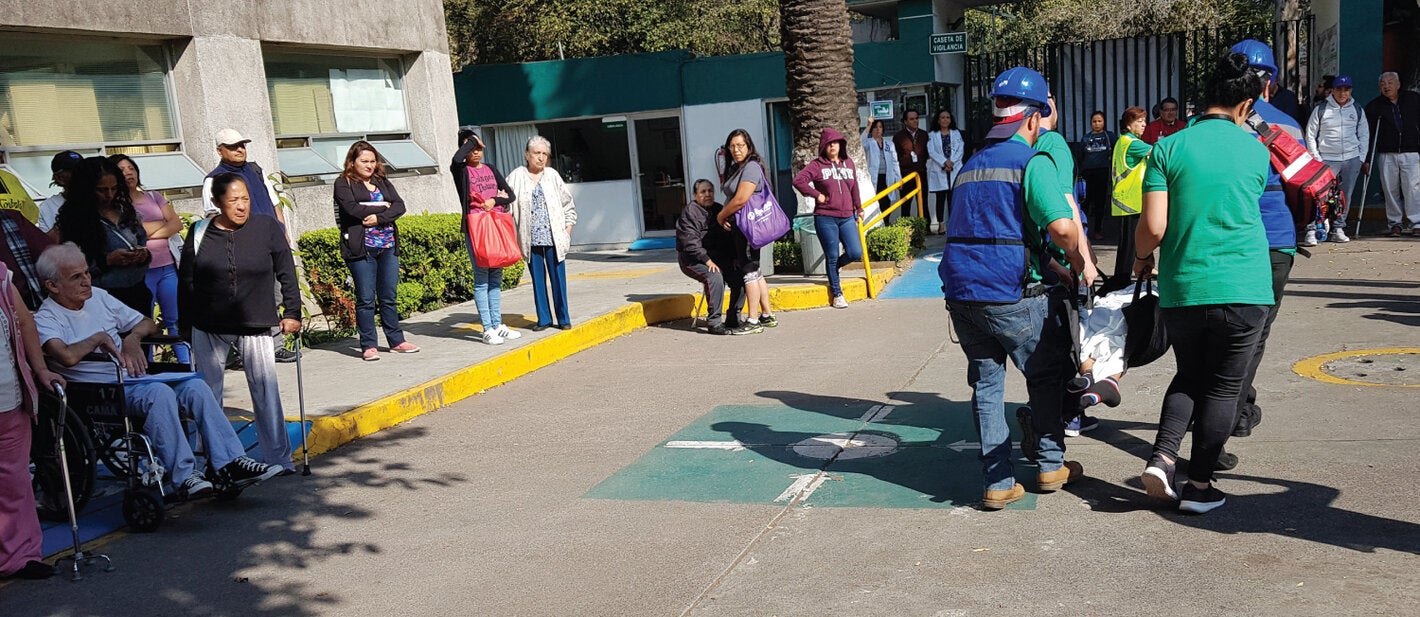The Americas region is experiencing steady urbanization, reaching a percentage of 81% globally in 2018, in 2020 more than 321 million people inhabited an urban setting in Latin America and The Caribbean, a figure that could increase by a further 53 million by 2035.
This high urbanization makes the region particularly vulnerable to health emergencies and disasters, a situation exacerbated by rapid urban growth and pronounced inequality. Increasingly complex public health and emergency management challenges arising from rapid urbanization, coupled with growing global interconnectedness, have increased the vulnerability of urban populations to disasters.
Specific approaches to emergency preparedness, response and recovery are needed to address the specific challenges presented by cities, such as the management of large population volumes, urban mobility and inadequate critical infrastructure.
COVID-19 underscored the urgent need to improve urban health emergency preparedness and response in Latin America. Rapid urban growth, coupled with social vulnerabilities and unplanned urbanization, call for immediate and concerted action to strengthen disaster response capacities in urban settings.
About the initiative - Call to action
WHO Member States requested to increase the level of preparedness in urban areas, so WHO adopted Resolution WHA75.7 (May 2022) focused on strengthening health emergency preparedness and response in cities and urban settings. Previously, Resolution WHA73.8 (November 2020) called on WHO to focus on the unique vulnerabilities of cities from a health security perspective in line with “Strengthening preparedness for health emergencies: implementation of the International Health Regulations (2005)”.
In this regard, PAHO/WHO, through the Department of Health Emergencies, implemented the pilot phase of this initiative during 2023, with the objective of identifying critical aspects for the implementation of this mandate in the Region. This pilot focused on Bogota, Quito and Tegucigalpa because these cities face a number of unique challenges related to the management of large population volumes, urban mobility and limited critical infrastructure, which allowed the mapping of specific approaches to strengthen preparedness and response to health emergencies from different perspectives.
The main objective of this initiative is to enhance existing capacities and strengthen the competencies of the International Health Regulations (IHR 2005) at the local and urban level for preparedness, response and recovery of the health sector in the countries of Latin America and the Caribbean. In addition, it seeks to improve the integration of local/municipal authorities and actors in the preparedness processes for health emergencies and disasters, with an approach focused on the resilience of the Health Sector, to ensure the continuity of its operations, regardless of the origin of the emergency.
Strengthening the health sector in urban settings and cities seeks to protect the health and well-being of the urban population, which is where the largest number of human beings in the Region are concentrated. Through a comprehensive and specific approach for each city, strategically aligned with the PAHO Strategic Plan 2020-2025 and the Sustainable Development Goals 2030, it is expected to create a replicable and scalable model that can benefit other cities in the region and contribute to building safer and more resilient communities in the face of health emergencies with a multi-threat approach.
PAHO is currently moving forward with the implementation of the initiative in Quito, Bogota, Cali, Guatemala and Kingston, based on a comprehensive approach that includes a preliminary diagnosis of the risks, capacities and needs of each city, a feasibility and impact analysis, followed by the formulation of specific roadmaps to strengthen capacities and competencies, in addition to promoting an intersectoral and participatory approach. This involves supporting the alignment and integration of local and municipal processes, tools and technical activities with eight key areas to be strengthened.
The implementation of the initiative will allow the development or adaptation of guidelines, tools, resources and documents, the identification of vulnerabilities in critical infrastructure, the development or updating of contingency plans and the training of health personnel and associated sectors in emergency response procedures based on the context and priorities identified. In addition, the initiative also integrates the reduction of the environmental impact of health facilities and their contribution to the carbon footprint, promoting sustainable practices, which implies the implementation of energy efficiency measures, the use of green technologies and the promotion of environmentally responsible management of resources.






